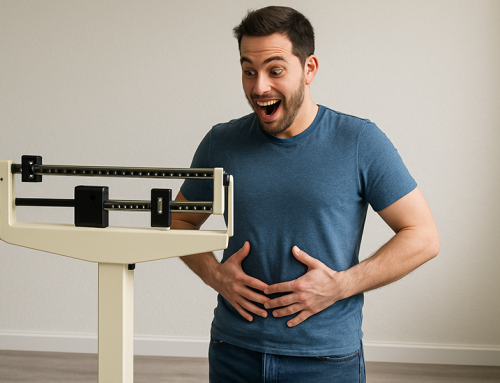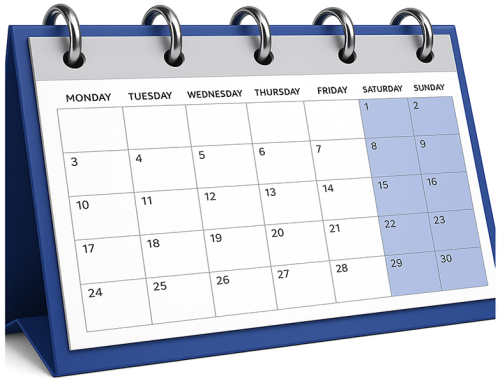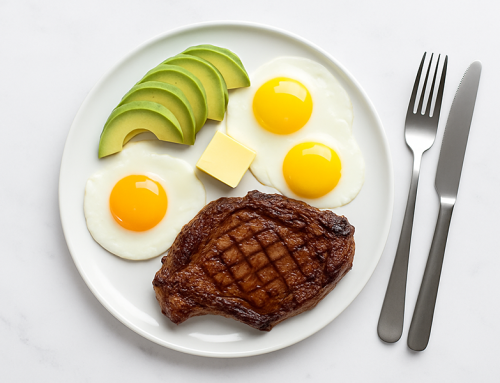Most of us worry about our weight, personal appearance, and much more. But these are not the only reasons for concern. Excess body fat has profound metabolic consequences, putting us at risk for heart disease, diabetes, stroke, cancer, and possibly depression. Nonetheless, the prevalence of obesity, a Body Mass Index of 30 or more, continues to rise in this country. Today, 33% of American adults are obese, compared with 15% in the late 1970s (1). Not to mention, kids are on the horizon for obesity, along with many health problems at such young ages.
Our genes haven’t changed much in the past two or three decades. And although most of us get less exercise than we need, it’s unclear whether we are much more sedentary than our parents were. What has changed is how we eat and how much we eat. The bottom line is that we gain weight when we take in more calories than we expend. And lately, Americans have been eating more and more with less exercise.
The average person consumed 300 more calories per day in the year 2000 than in 1985 (1). Without a commensurate increase in physical activity, that means an added two to three pounds per month. Do the math for a year and see what you get. It can be quite disturbing when you stop and think about it, especially if you have adolescents running around.
But Why are We Eating More Calories Than We Really Need?
We can sit here and put the blame on many things, but at the end of the day, you are the one that controls what you put in your mouth. It is obvious that America has increased portion sizes everywhere you go. For example, a typical movie-theatre soda, once about 7 ounces, can now be “supersized” to 32-42 ounces!
A typical bagel, once 2 to 3 ounces, now weighs 4 to 7 ounces and may contain the caloric equivalent of five or six slices of bread (2.) You get where we’re going with this, America is trying to get us fatter and we are allowing it.
Practically everywhere we go, whether we are shopping, traveling, attending a sporting event, or seeing a movie, high calorie foods are far more available than healthier foods. In one study, University of Pennsylvania scientists left a large bowl of M&Ms at the front desk of an apartment building for 10 days with a sign encouraging people to help themselves, using the scoop supplied.
On some days, the scoop held one-quarter cup, on others, 1 tablespoon. People consistently took just one scoop, even though they were taking twice as much on some days as they did on others. This suggests we might be satisfied with smaller portions if only bigger ones weren’t so easily available (3).
We’ve Changed Our View of Which Portion Size is Normal
In 2004, replicating a study first conducted in 1984, Rutgers University researchers asked college students to serve themselves typical portions of breakfast, lunch, and dinner foods from a buffet table. The students chose amounts that were not only bigger than the serving sizes on current nutritional labeling but also as much as 30% to 40% larger than those selected 20 years earlier (4).
It is clear that even though Americans have a choice to choose smaller portions, we still go for the bigger helping. There could be many reasons why we do this. When we have bigger food portions, we assume that our satiety levels will be higher throughout the day. This could be true, but the majority of Americans are not aware of balancing their macronutrients in these big portion meals.
The majority of the time it’s all carbs that they are consuming, not to mention more than likely higher glycemic index carbs, which are going to just give them a large rise in blood sugar levels, not make the body work hard while metabolizing these nutrients, and thus leaving them hungry in a few hours and leading them to snack. What ever happened to Americans wanting to look good naked?
If Americans were more aware of what they are exactly taking in, they might have a fighting chance. For example, if there was a choice between a bagel loaded with cream cheese and a sweet potato, most Americans would go after the Bagel. When they should go for the lower glycemic carb that is going to keep their blood sugar levels stable throughout the day, as well keeping satiety levels elevated.
What to do About Portion Control
Whether you eat out, prepare your own meals, or catch food on the run, portion control is essential to limiting your calorie intake. We are huge advocates on hitting your daily macronutrient targets as you know exactly how much your body is taking in on a daily basis, its sustainable long term, and there is a ton of flexibility. But that type of diet is not for everyone as we all have different schedules and lifestyles.
Here are some tips we suggest for keeping portions in proportion.
- Train Your Eye: Measure out servings of the foods you commonly eat so you know what a single serving looks like. Developing an eye can be extremely helpful when dining out or attending social events, where portions may be too large or the food unlimited, aka a buffet.
- Change Your Tableware: Use smaller bowls or plates at breakfast, lunch, and dinner; the amount of food will look more plentiful.
- Eat a Wide Variety of Whole Foods: Eat a good mix of lower GI foods (Complex carbs) such as whole grains, veggies, sweet potatoes, brown rice, and fruits. Choose foods high in fiber, as fiber slows down digestion and keeps your satiety levels higher. Make sure to get in lean animal proteins and healthy fats as well.
- Control Portions at Home: Try and eat at regular intervals throughout the day; if you wait until you are hungry, you are more likely to snack on the wrong kinds of food or over indulge at the next meal. Also keep it to one serving at each meal, no second helpings.
- Control Portions While Eating Out: Go to restaurants that offer plenty of a la carte options, avoids buffets and salad bars. Plan ahead and check the restaurant menu online, that way you have an idea of what you are going to eat and how much roughly.
The bottom line is that we gain weight when we take in more calories than we expend. And lately, Americans have been eating more and more with less exercise. At the end of the day, only you can control what goes into your body. And if you are over consuming calories with lack of exercise, then you have to hold yourself accountable for the unpleasant outcome.
References:
- Harvard Women’s Health Watch. Volume 15. Number 3. November 2007.
- Mattes, et al., Energy intake and obesity: Ingestive frequency outweighs portion size. Physiology & Behavior. 2013
- Young, et al., The Contribution of Expanding Portion Sizes to the US Obesity Epidemic. American Journal of Public Health.2002
- Kral, et al., Effects on hunger and satiety, perceived portion size and pleasantness of taste of varying the portion size of foods. University of Pennsylvania School of Medicine. 2005
About The Authors:

Visit them at:
Dynamic Duo Training
FaceBook Page
Twitter
YouTube Channel






I think these are really good ideas for practical steps people can take. We can also train ourselves to become more receptive to internal signals that we’ve eaten enough: http://www.leehw.com/enough/